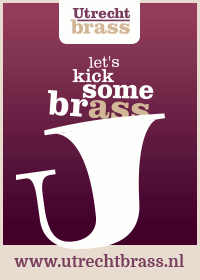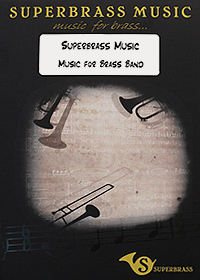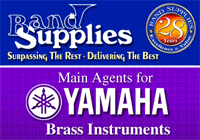Charley Brighton
25-Nov-2005Malcolm Stowell (piano & organ) and Peter Bale (saxophone)
St Mary’s Parish Church
Slough
Saturday 19th November
An audience of more than 50 people braved the crisp November weather to attend the latest euphonium recital given by Charley Brighton at his church in Slough, the 20th since the series began.
On display at the front of the church were four from his collection of period instruments, although on this occasion the whole recital was played on his 2900 Model Willson euphonium. The programme consisted entirely of adaptations of music originally intended for other instruments, most of which we receiving premiere performances in their new guise.
Several pieces written for the clarinet have been adapted by euphonium players in recent days, the most well-known probably being Rossini's "Theme and Variations". Rheinhold Rutter's "Variations on ‘Long, Long Ago'" dates from the 19th Century and shares many of the characteristics of that work, exploiting the full range available, right from the opening cadenza. It calls for considerable agility on the part of the soloist, whilst the smooth flowing melody in the centre section also offered the opportunity for some well-controlled, sustained playing.
Good breath control was also called for in the second item, an arrangement of the "Adagietto from Mahler's 5th Symphony", made popular by its use in the film "Death in Venice" and also at the funeral of President J. F. Kennedy. Malcolm Stowell accompanied Charley on the church's fine organ, in an adaptation of the organ transcription by Hans-Martin Schwindt. Opening with a selection of mellow stops, matching to a tee the euphonium's sound at the start, the performance seemed hampered a little by the lack of a clear, rhythmic pulse in the more sustained sections. As the emotional temperature rose, so the higher-pitched stops were added and the music grew in intensity, but with the euphonium still being allowed to be the dominant voice.
Michael J. D. Roberts is a 19 year old law student from Portsmouth, who wrote "The Clockmaker" for violin – Charley remarked that he hoped he wouldn't be sued for making an inappropriate arrangement! The composer described a lonely clockmaker, working away with the constant ticking in the background, which gradually drives him round the bend, and this was portrayed in the music, with the piano setting out a persistent 6/8 pulse under the euphonium melody. From a fairly sedate opening, with repeated melodic phrases in the top register, the solo line became more frenetic, with note-lengths getting shorter and the page getting blacker through to the frantic running scales of the final couple of bars.
For the final item in the first half of the recital, Malcolm returned to the organ for an adaptation of Charles Ives' "Variations on America". Originally written for organ, but since orchestrated by William Schuman and arranged for orchestral brass by Eric Crees. The melody, variously attributed to England, Scotland and France, is of course better known in England as "God save the Queen" (or "King"!) and it must have created quite a stir when Charles Ives himself first performed it during a church service in 1892, with its unusual transformations of the melody, including the use of inversion and polytonality. This quirky piece translated well to the combination of euphonium and organ, with the organ alone playing two interludes and the euphonium taking over the pedal part in the appropriate variation.
For the concluding two items, they were joined by Peter Bale on saxophone, the first time a saxophone had appeared in the series of recitals. Modest Mussorgsky's "Pictures at an Exhibition" was written for piano but has been orchestrated many times, the most familiar version being that by the French composer Maurice Ravel. For the movement entitled "The Old Castle" he chose the alto saxophone for the haunting melody, and this had in turn been arranged by Larry Teal for saxophone and piano.
The final piece was a trio by the American composer Joe Miserendino who has written several works for Charley. Entitled "The Brook, the Bear and the Bird" it was intended for flute (or clarinet), bassoon and harp, but was adapted on this occasion for piano (the Brook), euphonium (the Bear) and saxophone (the Bird). With the piano setting the scene and depicting the brook meandering along, the two wind soloists in turn made their contribution, the melodic material appearing in first one part then the other as the piece developed, including some rather pungent harmonies as the bear was depicted harrumphing beneath the plaintive call of the bird. Despite an early entry from the bird at one point, the premier seemed to be well received by the audience.
Since the series of recitals began in May 2001 there have been more than 40 premieres of new compositions or arrangements, and over the years a regular audience has been built up. It is certainly always worth dropping in if you're in the vicinity of Slough, and forthcoming recitals - admission free - are usually announced on www.4barsrest.com as well as on Charley's own website at http://www.euph9.freeserve.co.uk/Stmarys.htm .









